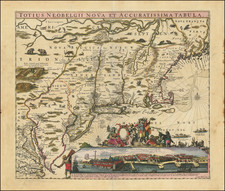Nineteenth Century facsimile edition of Faden's map of New Jersey, based upon Bernard Ratzer's surveys in 1769, issued in the Geological Survey of New Jersey in 1877. This unsual example is laid on linen, and but for a few clean fold breaks is in nice condition. The map was the most important mapping of New Jersey prior to the American Revolution. It shows the area immediately prior to the battle of Monmouth, including a fortified Valley Forge. A seminal map of New Jersey, with original issues selling for well in excess of $10,000.00. Schwartz & Ehrenberg, pl. 120. Several library stamps from the Georgetown Friends Free Library.
Julius Bien (1826-1909) was a German-born American lithographer and cartographer, renowned for his significant contributions to American cartography during the 19th century. Born on September 27, 1826, in Naumburg, Germany, Bien originally trained in his homeland, mastering the nascent craft of chromolithography, a method for producing multi-color prints.
In the 1850s, Bien emigrated to the United States, where he set up his own lithography firm, Julius Bien & Co., in New York. His innovative techniques and meticulous attention to detail quickly earned him a reputation as one of the country's leading lithographers. The firm became known for its wide range of work, from maps and atlases to commercial prints and illustrations.
One of Bien's most significant collaborations was with the U.S. government, particularly the U.S. Geological Survey (USGS). In the late 19th century, the USGS undertook the ambitious project of mapping the entire United States. Bien's firm was responsible for producing many of these topographical maps, and he introduced advanced printing techniques that enhanced their clarity, precision, and detail.
However, not all of Bien's ventures were successful. His attempt at reproducing a double elephant folio edition of Audubon's Birds of America in the 1860s, for instance, was left incomplete due to financial challenges posed by the Civil War. Despite this, many of the plates he did produce for this edition are considered masterpieces of chromolithography.
Julius Bien passed away on December 21, 1909, in New York. His contributions to lithography and cartography in the U.S. left a lasting legacy, with many of his techniques becoming standard practice in the field. His maps, in particular, serve as a testament to the evolving understanding and depiction of the American landscape during a period of rapid westward expansion and scientific exploration.
William Faden (1749-1836) was the most prominent London mapmaker and publisher of the late-eighteenth and early-nineteenth centuries. His father, William Mackfaden, was a printer who dropped the first part of his last name due to the Jacobite rising of 1745.
Apprenticed to an engraver in the Clothworkers' Company, he was made free of the Company in August of 1771. He entered into a partnership with the family of Thomas Jeffreys, a prolific and well-respected mapmaker who had recently died in 1771. This partnership lasted until 1776.
Also in 1776, Faden joined the Society of Civil Engineers, which later changed its name to the Smeatonian Society of Civil Engineers. The Smeatonians operated as an elite, yet practical, dining club and his membership led Faden to several engineering publications, including canal plans and plans of other new engineering projects.
Faden's star rose during the American Revolution, when he produced popular maps and atlases focused on the American colonies and the battles that raged within them. In 1783, just as the war ended, Faden inherited his father's estate, allowing him to fully control his business and expand it; in the same year he gained the title "Geographer in Ordinary to his Majesty."
Faden also commanded a large stock of British county maps, which made him attractive as a partner to the Ordnance Survey; he published the first Ordnance map in 1801, a map of Kent. The Admiralty also admired his work and acquired some of his plates which were re-issued as official naval charts.
Faden was renowned for his ingenuity as well as his business acumen. In 1796 he was awarded a gold medal by the Society of Arts. With his brother-in-law, the astronomer and painter John Russell, he created the first extant lunar globe.
After retiring in 1823 the lucrative business passed to James Wyld, a former apprentice. He died in Shepperton in 1826, leaving a large estate.

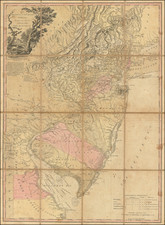








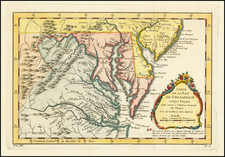
![[ New England / Northeast / Canada ] Tierra Nueva](https://storage.googleapis.com/raremaps/img/small/86737.jpg)
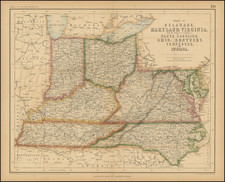
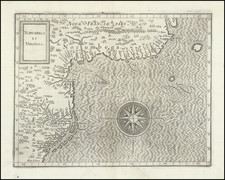
![[St. Helena] The True Description of the Island of Ascention lyeing under 8 degrees on ye South syde of ye Equinoctiall lyne.](https://storage.googleapis.com/raremaps/img/small/78964.jpg)
